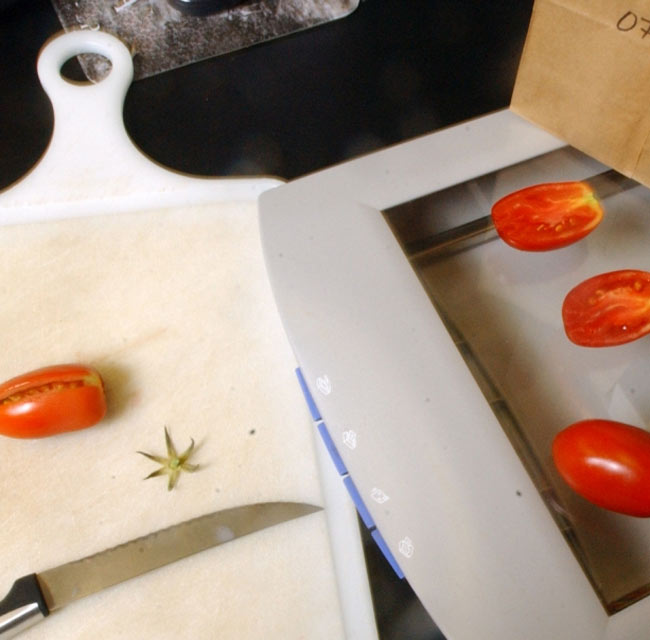What's Behind the Crazy Shapes of Fruits and Vegetables

This Behind the Scenes article was provided to LiveScience in partnership with the National Science Foundation.
Here's a bit of veggie trivia for you: How do you fit a pepper-shaped tomato into a round hole? You turn it into a cherry tomato.
OK. That wasn't a very good joke at all. But it’s completely possible to do. Crop scientists at Ohio State University have cloned a gene that controls the shape of tomatoes — a discovery that could help unravel the mystery behind the huge morphological differences among edible fruits and vegetables as well as provide new insight into mechanisms of plant development.
According to Esther van der Knaap — lead researcher in the NSF-funded study and an assistant professor of horticulture and crop science — the gene, dubbed SUN, is only the second ever found to play a significant role in the elongated shape of various tomato varieties.
One of the most diverse crops in terms of shape and size variations, tomatoes evolved from a very small, round wild ancestor into the wide array of cultivated varieties — some large and segmented, some pear-shaped, some oval, some resembling chili peppers — available through most seed catalogs and for sale in supermarkets.
However, very little is known about the genetic basis for such transformations in tomatoes. And virtually nothing has been discovered about morphological changes in other fruits and vegetables.
"We are trying to understand what kind of genes caused the enormous increase in fruit size and variation in fruit shape as tomatoes were domesticated," van der Knaap pointed out. "Once we know all the genes that were selected during that process, we will be able to piece together how domestication shaped the tomato fruit — and gain a better understanding of what controls the shape of other very diverse crops, such as peppers and the cucumber and squash family."
Get the world’s most fascinating discoveries delivered straight to your inbox.
One of the first pieces in van der Knaap’s fruit-development puzzle is SUN, which takes its name from the "Sun 1642" cultivated variety where it was found — an oval-shaped, roma-type tomato with a pointy end. The gene also turned out to be very common in elongated heirloom varieties, such as the Poblano pepper-like "Howard German" tomato.
"After looking at the entire collection of tomatoes we could find, we noticed that there were some varieties that had very elongated fruit shape," van der Knaap explained. "By genetic analysis, we narrowed down the region of the genome that controls this very elongated fruit shape, and eventually narrowed down that region to a smaller section that we could sequence to find what kind of genes were present at that location.
"In doing that," van der Knaap continued, "we identified one key candidate gene that was turned on at high levels in the tomato varieties carrying the elongated fruit type, while the gene was turned off in round fruit."
Once SUN was identified, the next step involved proving whether this gene was actually responsible for causing changes in fruit shape.
To do that, van der Knaap and her team conducted several plant-transformation experiments. When the SUN gene was introduced into wild, round fruit-bearing tomato plants, they ended up producing extremely elongated fruit. And when the gene was "knocked out" of elongated fruit-bearing plants, they produced round fruit similar to the wild tomatoes.
When asked if her lab could make small round cucumbers, van der Knaap answered, "I'm not sure. But they would certainly look nice in a salad."
Editor's Note: This research was supported by the National Science Foundation (NSF), the federal agency charged with funding basic research and education across all fields of science and engineering. See the Behind the Scenes Archive.
 Live Science Plus
Live Science Plus





